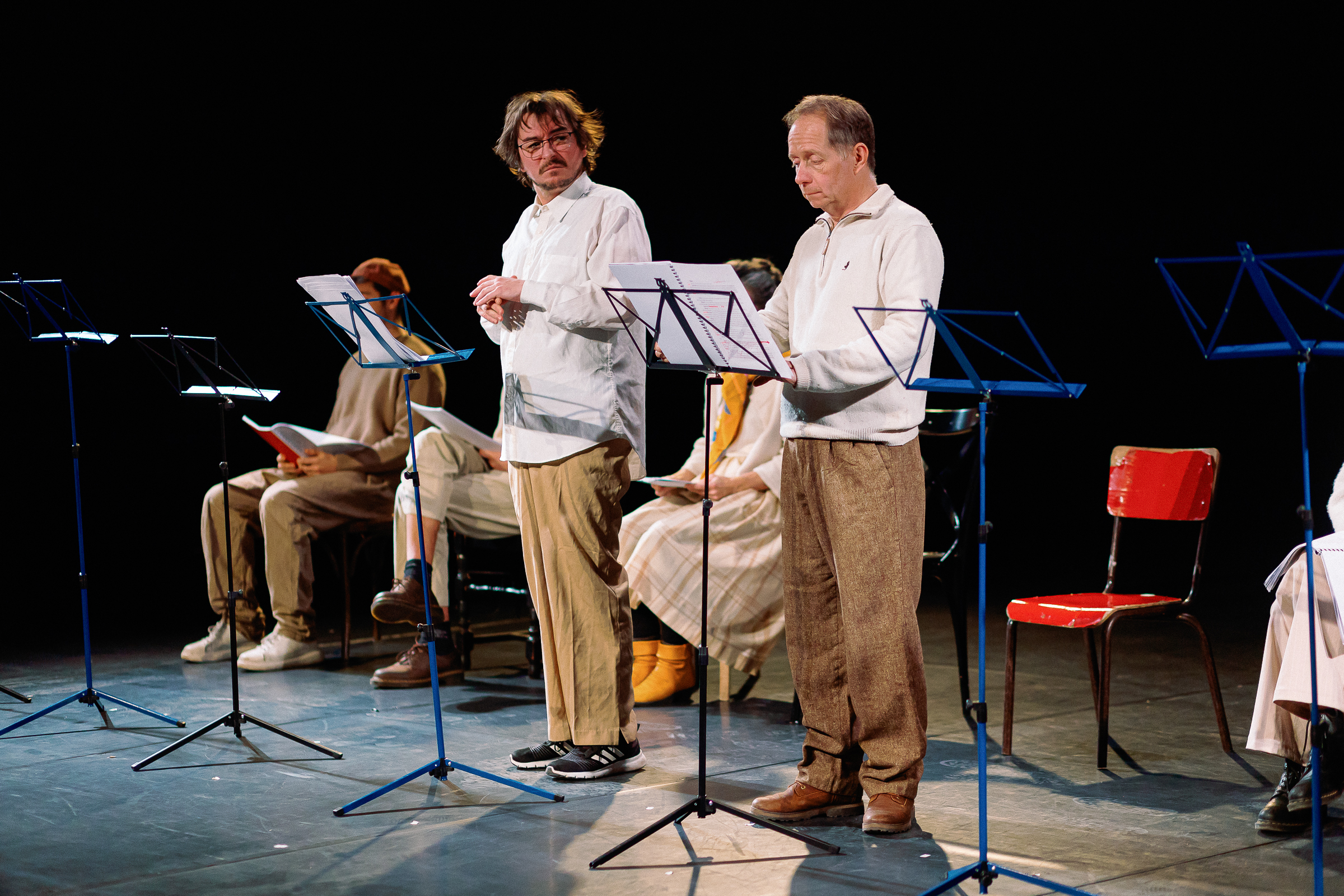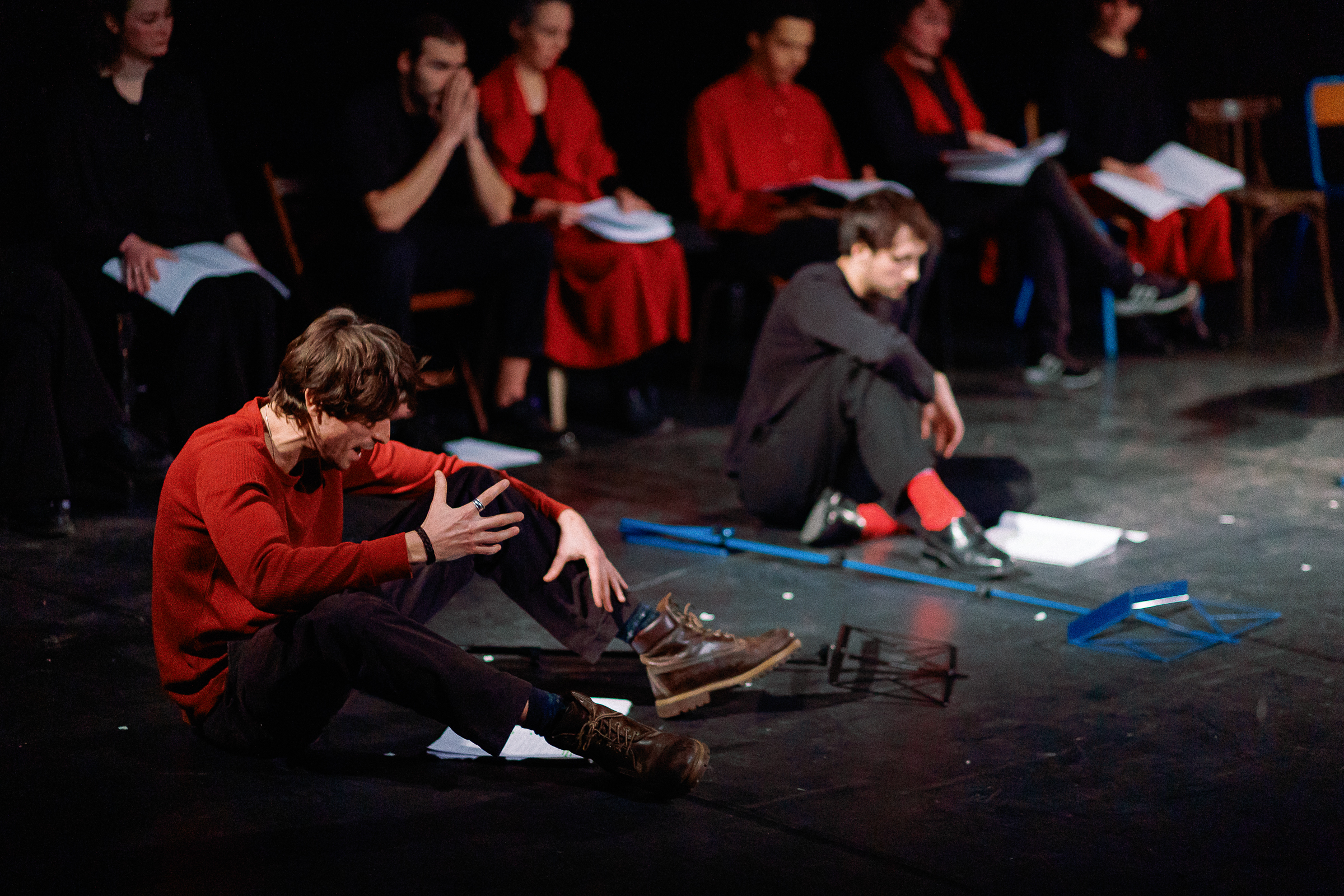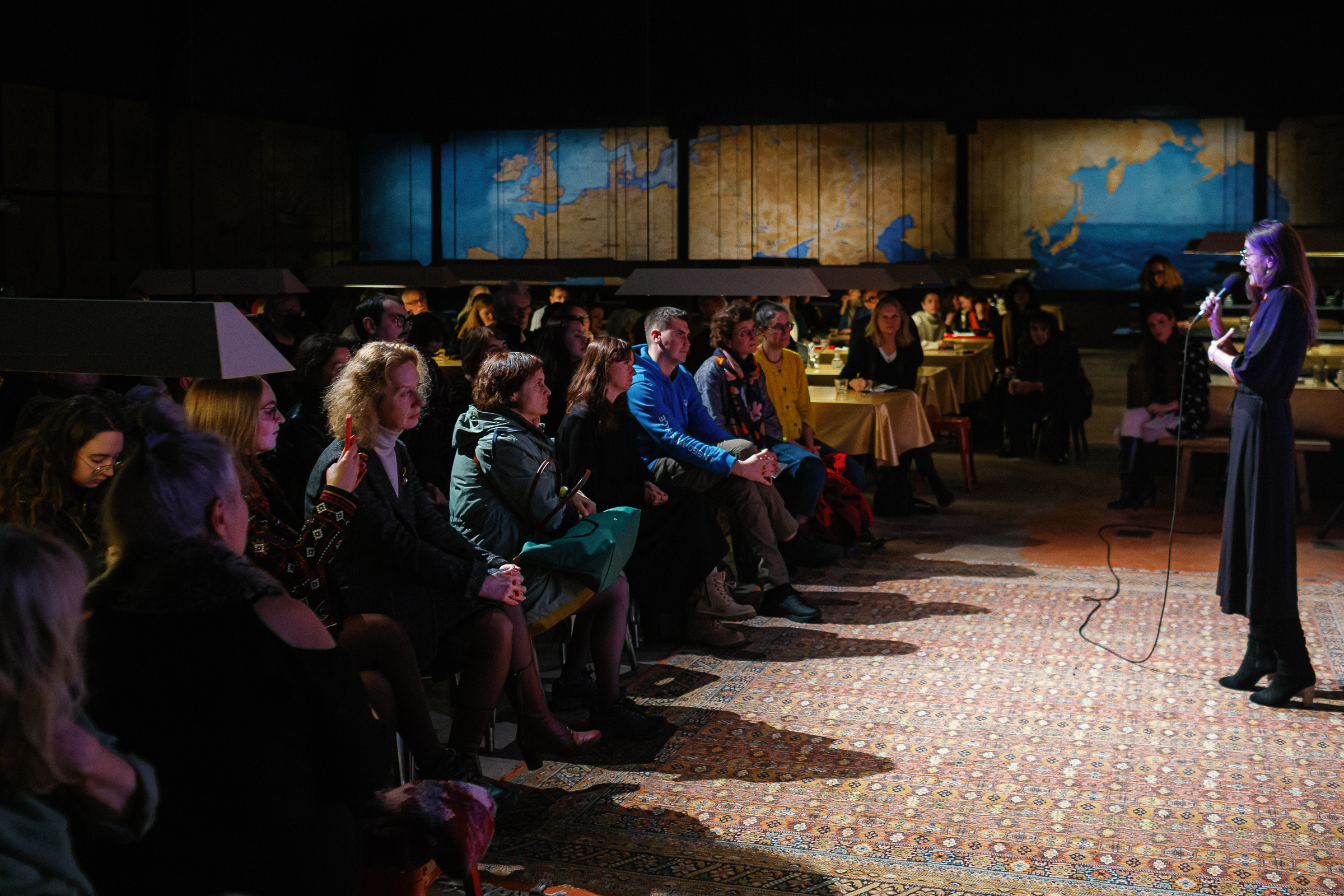ZMINA: Rebuilding - Ukrainian Drama Week Festival: Bringing Ukrainian Theatre to French Stages

When Ukraine is mentioned, the first thing that often comes to mind is the ongoing war. However, this self-defending country is not only a place of tremendous loss, but also a bearer of cultural heritage. The Ukrainian Drama Week Festival brought a piece of the country’s culture to Paris. In this case, it was theatre culture. The organizing team shared more details.
What was the initial inspiration for creating the Ukrainian Drama Week Festival?
The desire for Ukraine to be known not only as a country of war, suffering, and constant need for aid but also as a nation that carries the world’s cultural heritage, a country that has something to share and enrich humanity’s legacy.
What goals were you aiming to achieve through the festival?
To integrate Ukrainian authors, especially classics, into the repertoire of French-speaking countries; to create a stable and recognisable reputation for Ukrainian theater and drama; to establish links between the Ukrainian and French theatre communities; to replenish the library of translated Ukrainian plays.
Why did you decide to focus on a French audience?
This project is a continuation of our efforts to strengthen and support the presence of Ukrainian culture and cultural institutions in France. For the first time, we demonstrated the format of theater readings of plays by Ukrainian playwrights as part of the Ukrainian Spring in Paris project, which took place in 2023.
At that time, the performances of Ukrainian playwrights became the most visited and discussed events of the entire project, and we realised that holding a full-fledged Ukrainian Drama Festival in Paris would help to continue the development of cultural diplomacy and strengthen Ukraine's cultural reputation in France.
For the French partner, apIUF, it was important to use its existing institutional network to support a promising performative art project that would enable the French audiences to discover and engage with Ukrainian culture.
It was also important that the festival's producer had been living and working in France for a long time, so she knew the French theater audience well and understood how to engage and capture their attention.

Could you share the details of the festival's preparation process—how long it took, the biggest challenges you faced, and any surprises along the way?
The festival preparation took about six months. The first stage was the selection of plays, which took about a month and a half. Then came the adaptation and translation of the works, and literary editing. After the adaptation was completed, the process of casting actors for each play began, followed by planning the schedule of rehearsals and first readings.
Throughout this period, a communication campaign was developed and implemented, and the project team worked on organising the festival.
The main challenge and unique aspect of this year’s festival was filming and editing a documentary about Ukrainian culture and its resistance to Russian aggression through theatre. This was the most difficult part of the process, because it had to be done in an extremely short time and in difficult blackout conditions in Ukraine.
What criteria did you use to select the plays that were ultimately featured in the festival?
The main selection criteria for the plays were: absence of a victim narrative; presence of human stories and characters that any European audience can relate to; exploration of the historical Ukrainian context and, lastly, humour.
Could you introduce the individual plays presented at the festival?
“Maroussia from Bohuslav” by Mykhaïlo Starytskyi is a historical saga about personal sacrifice and the heroism of an ordinary woman during the Cossack-Turkish wars. “Martyn Borulia” by Ivan Karpenko-Karyi is a satire on human flaws and delusions. “Stickers” by Ihor Nossovsky is a story of an elderly woman with Alzheimer's and her surroundings in occupied Kherson. “Euphorbier” by Oksana Grytsenko is a tale of life under occupation, told through the experiences of three generations of women.

How did the process of adapting Ukrainian plays for the French audience unfold?
We have tried to interfere as little as possible with the original text. However, when necessary, especially in the case of historical context—additional explanations are incorporated as separate lines of dialogue (with the author's consent in the case of contemporary works).
Almost all classical texts require condensation and a reduction in the number of characters. These adjustments often happen organically during rehearsals, as the first focus group for the reception of Ukrainian works are the actors themselves.
On what basis did you select the actors?
All the actors are professional French theatre actors who work in various Parisian theatres. Some of them had already participated in the performances of the Days of Ukrainian Drama, which took place in Paris in the winter of 2023 as part of the Ukrainian Spring project, and were interested in continuing to participate in projects that present Ukrainian drama. An important selection criterion was the actors' understanding that the performances were not just part of a theatre festival but also a part of the Ukrainian resistance. Therefore, a critical criterion was the willingness of the French actors to be part of this resistance movement.
What were the most challenging aspects of adapting Ukrainian productions for the French language and audience?
One of the most challenging aspects was working under tight deadlines.
What were the visitors' reactions to the individual productions, or to the festival as a whole?
Very positive, with visitors expressing great appreciation for the opportunity to discover and a desire to learn more. In total, the festival events were attended by around 700 people, some of whom came to 2-3 performances. During the survey of visitors, the vast majority of reactions to the questions “What is your general impression of what you saw?” and “How interested were you in the Ukrainian Drama Week?” were “Actively interested” and “Very interested”.
Did you receive feedback from professionals, such as theater critics?
We received positive impressions and offers of further support from several theatre directors and producers;
from the French national office for contemporary performing arts dissemination; from Department of Cultural Affairs of the city of Paris, and from the International Centre for Theatrical Translation.

How did you promote the festival?
The apIUF conducted a targeted promotional social media campaign to reach relevant audiences, complemented by an intensive email campaign and festival promotion across its social media channels. Additionally, in-person meetings were arranged, and emails were sent to institutional partners.
How did the festival help to connect the Ukrainian and French theater communities?
The visit to Paris of two contemporary Ukrainian theater playwrights, whose plays were performed during the Festival, provided an opportunity for Ukrainian and French theatre professionals to meet. Informal discussions followed each performance. After watching a film about contemporary theatrical life in Ukraine, the French theater director expressed interest in contacts and possible cooperation with the Kyiv Playwrights' Theatre.
In your view, did the festival influence the perception and interest in Ukrainian culture among the French audience?
Yes, the audience manifested the wish to discover more Ukrainian plays.
Do you see potential for similar collaborations between Ukrainian and French theater professionals to happen more regularly in the future?
Yes but we need more promotion for such a collaboration.
What were the biggest differences you noticed between French and Ukrainian theater environments?
Different schools of acting.

What message did you hope to convey with this festival?
That Ukraine is a strong state with a deep and independent culture, history, and identity.
How large was the team working on the festival?
The project team consisted of 4 people. In total, about 40 people were involved in the project, including actors, playwrights, editors, translators, volunteers, and technical staff.
Do you plan to expand the library of translated Ukrainian plays into other languages?
We are sure that this process is absolutely necessary, but so far we have focused on French translations.
Author: Ján Janočko
ZMINA: Rebuilding is a project co-funded by the EU Creative Europe Programme under a dedicated call for proposals to support Ukrainian displaced people and the Ukrainian Cultural and Creative Sectors. The project is a cooperation between IZOLYATSIA (UA), Trans Europe Halles (SE) and Malý Berlín (SK).